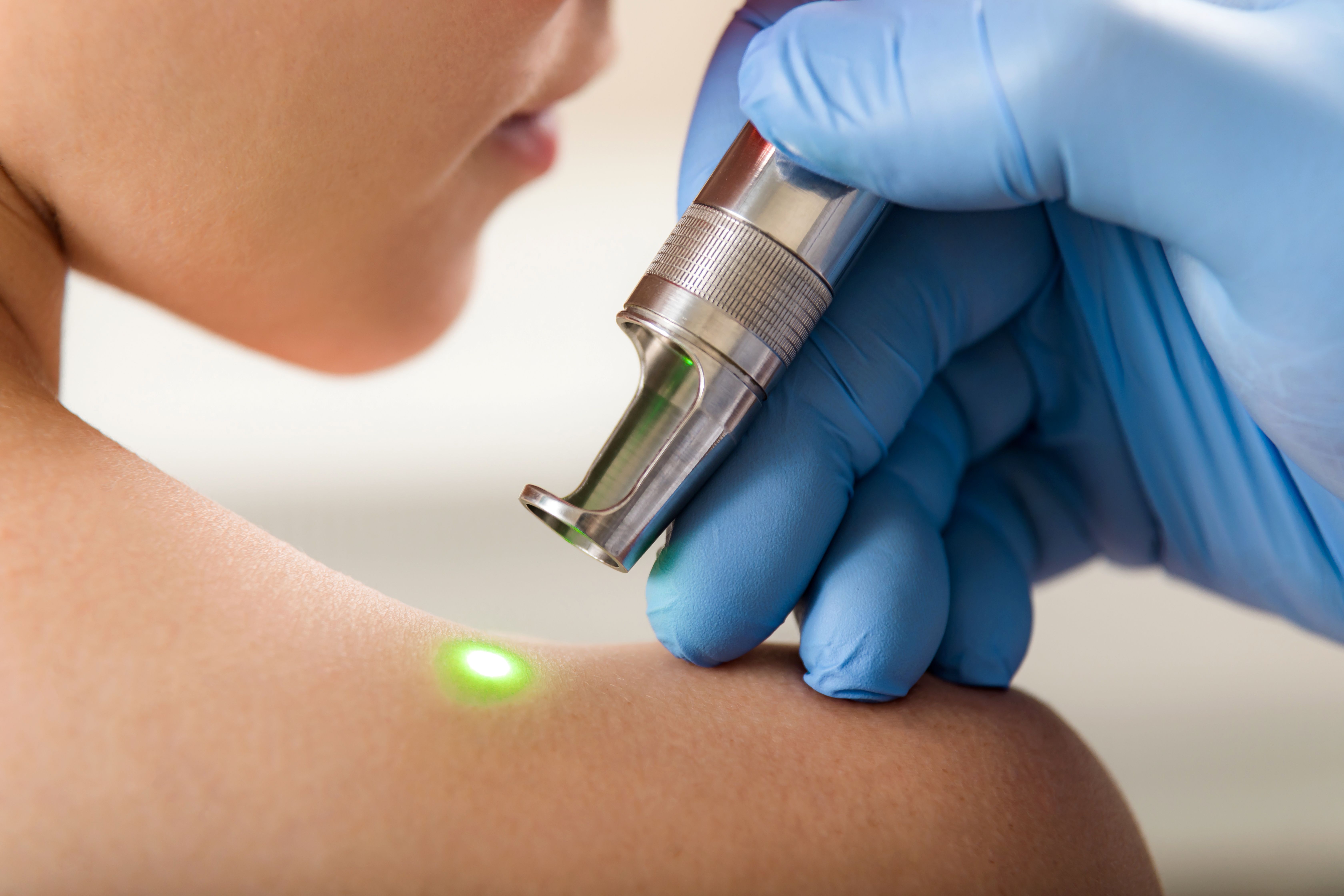- Acne
- Actinic Keratosis
- Aesthetics
- Alopecia
- Atopic Dermatitis
- Buy-and-Bill
- COVID-19
- Case-Based Roundtable
- Chronic Hand Eczema
- Drug Watch
- Eczema
- General Dermatology
- Hidradenitis Suppurativa
- Melasma
- NP and PA
- Pediatric Dermatology
- Pigmentary Disorders
- Practice Management
- Precision Medicine and Biologics
- Prurigo Nodularis
- Psoriasis
- Psoriatic Arthritis
- Rare Disease
- Rosacea
- Skin Cancer
- Vitiligo
- Wound Care
Article
Avoid resurfacing complications
Author(s):
Washington - Dermatologists have a variety of technologies at their disposal for achieving skin rejuvenation, including lasers and light devices.

One expert discusses which devices have worked best in his experience, as well as ways to avoid complications.
Standard resurfacing procedures carry complication risks, including hypertrophic scarring; pigmentary loss; and viral, bacterial and candidal infections, says Roy G. Geronemus, M.D., clinical professor, department of dermatology, New York University Medical Center and director, Laser & Skin Surgery Center, New York.
Lasers go fractional
Traditional laser resurfacing devices, such as the CO2 laser, ablate the epidermis and upper dermis, resulting in crusting, swelling, oozing and erythema that can last for one to two weeks.
Fractional thermolysis or fractional laser skin resurfacing only damages certain zones within the targeted area, causing only fractional damage through the heat of the light source. The fractional laser gently resurfaces the epidermis and simultaneously reaches deep into the dermis to promote new collagen formation, essentially remodeling the skin. The treated skin will suffer only a brawny erythema, and downtime is significantly minimized.
Optimal improvement usually can be seen after approximately two to three months of treatment, as collagen remodeling and skin tightening continues.
"With fractional resurfacing, the incidence of hypertrophic scarring and long-term pigmentary changes has dropped to essentially zero, compared with standard resurfacing complications that we saw back in the heyday of CO2 and erbium:YAG lasers. There is a much higher safety profile with fractional resurfacing, and there is minimal to no downtime," Dr. Geronemus says.
He uses fractional thermolysis for the face, neck, chest and hands, and effectively treats solar damage, fine lines and wrinkles, acne scars, dyschromias and surgical scars. The procedure requires topical or local anesthesia and the degree of pain is directly proportional to the density of the pulses given and the number of passes.
Nd:YAG lasers
The Nd:YAG laser can be used in the treatment of moderate lines and wrinkles, as well as hemangiomas and vascular malformations. This laser is particularly effective because of its deep penetration into the tissue, but Dr. Geronemus advises caution, especially in children, as there is a risk for atrophic scarring and potential hair loss following the procedure.
He tells Dermatology Times that pulsed dye lasers enjoy a good safety profile, but physicians must be careful when employing these lasers in the presence of oxygen and nitric oxide, as combustion is a real danger.
Q-switched lasers
Dr. Geronemus says Q-switched lasers can be very useful in the treatment of cutaneous pigmented lesions and tattoos.
The Q-switched ruby laser is effective in treating cutaneous lesions such as lentigines and freckles, and can improve blue-black tattoos, as well as some green inks. The Q-switched Nd:YAG laser can be best used for blue-black tattoos, as well as dermal pigmented lesions. The Q-switched alexandrite laser is effective in the treatment of blue-black tattoos and has demonstrated some success in the removal of green tattoos.
"Though these Q-switched lasers have proven effective in the treatment of pigmented lesions, the physician should be wary of a possible paradoxical hyperpigmentation. This unwanted side effect is more common in darker skin types, particularly when using a Gaussian beam. This is not seen very much with the fractional laser, which, again, supports its safety profile," Dr. Geronemus says.
Caveats
Dr. Geronemus says the unwanted side effects of lasers and light devices can occur, even during treatment by the most skilled physician or office assistant.
He adds there is a tendency to hand off the laser or light device to people who have less training and are sometimes unsupervised. Though office assistants may have practice in operating such devices, he stresses the need for highly qualified individuals to operate these technologies to help avoid unwanted side effects.
Newsletter
Like what you’re reading? Subscribe to Dermatology Times for weekly updates on therapies, innovations, and real-world practice tips.













